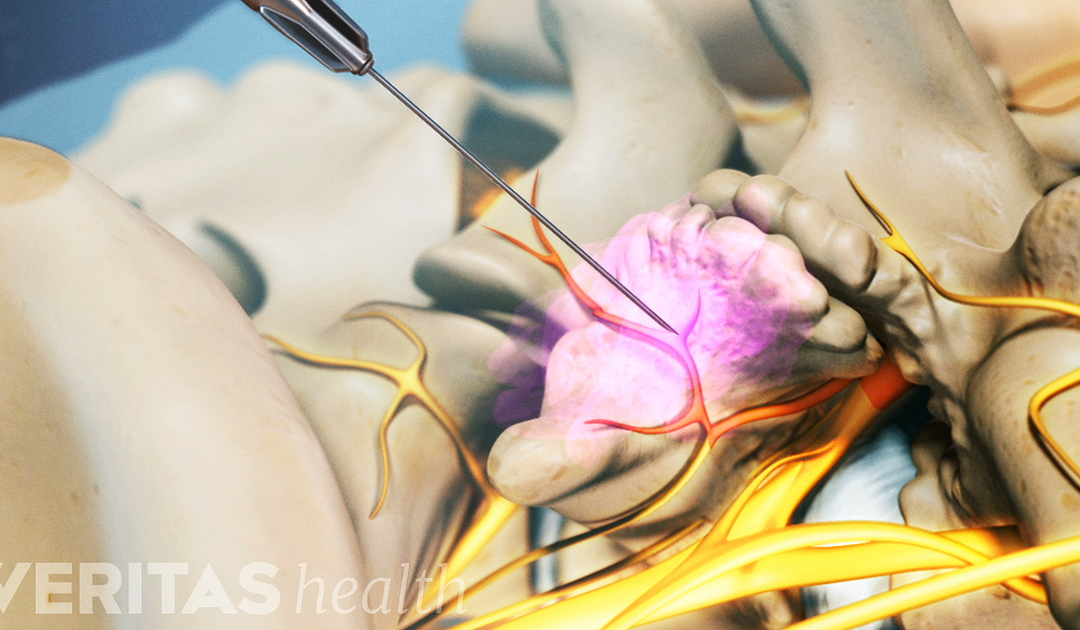A medial [MEE-dee-uhl] branch block is a type of spinal injection to temporarily block the pain signals coming from the medial nerves. Medial nerves run through the facet [FAS-it] joints. Facet joints are joints in your spine that allow for movement between vertebrae [VER-tuh-bray].
If you are experiencing back pain, a medial branch block may be one of several tests your doctor recommends to locate the source of your pain. A steroid such as cortisone [KOR-tih-zohn] may be used in this injection to reduce inflammation [in-fluh-MAY-shun].
Medial branch blocks are different from facet blocks in that the injection is placed outside the joint near the medial nerve. Because sciatica [sy-AH-tik-uh] can be caused by facet joint degeneration, which is a breaking down of the cartilage [KAHR-tl-ij] around the joint, a medial branch block may also be used to identify sciatic [sahy-AT-ik] pain.
A medial branch block can provide temporary pain relief, but is mostly a diagnostic tool to determine the source of your back pain and the next steps in your treatment plan. You should expect one of the following outcomes:
- The pain does not go away. This is a sign the back pain you are experiencing is not a result of facet joint problems.
- The pain goes away for a few hours but then comes back. This means the back pain is likely from facet joint problems and your doctor may recommend additional treatment in that area.
- The pain goes away after the block and stays away for several days. If your injection included a steroid that reduced inflammation, you may experience relief for a while. This is a sign that you may benefit from further treatment to the facet joint area and medial nerves.
What are the Benefits?
The biggest benefit to a medial branch block is being able to determine the source of your pain and decide what next steps can be taken to relieve it. You may also experience some short-term pain relief from the block.
How Do I Prepare?
This procedure does not require a hospital stay, but you should plan for 30–60 minutes of preparation before the injection. It’s likely you will be able to walk after the procedure, but you may require additional monitoring if there are complications. Even though you’ll be awake for the injection, you’ll need to bring someone with you to the appointment because driving is not recommended for up to 24 hours after a medial branch block.
Because part of the result is determining differences in your pain after the injection, your doctor may ask you to not take any pain medications before the procedure.
How is it Done or Administered?
Before the procedure, you’ll be asked to change into a gown so your doctor can access the injection site. A medial branch block usually follows these steps:
- Monitoring. Your vitals will be monitored to ensure there are no concerns your doctor should be aware of before the procedure.
- Sedation. Typically, you’ll be given a sedative to calm anxiety and relax muscles.
- Positioned face down or on your side. This will provide the best access for the injection.
- Local anesthesia [ann-ess-TEE-see-uh] administered. This usually causes the most discomfort during the procedure and is described as a mild stinging or burning sensation.
- Injection occurs. This lasts just a few seconds and usually can’t be felt because of the anesthesia.
- Recovery. You’ll be observed for a period of time after the injection to ensure there are no complications.
